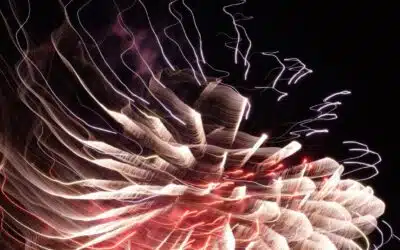The Mountain is alive! 1

Written By Paul Baffier
Blog | Dzogchen Texts | History of Dzogchen
The mountain is alive ! 1 : The luminous knowledge of living stones
In his superb autobiography, which I invite you to read, the first Dilgo Khyentsé, one of the greatest Dzogchen masters of the 20th century, describes the place where he was born :
“This extensive land is pervaded by vast grassy valleys in which many rivers flowing from minor valleys create the form of a blooming eight-petaled lotus that is decorated by many homes at its center and surrounded by well-plowed fields adorned with grain. On its edge is a massive mountain, completely surrounded by forests, rocks, and wellshaped hills covered with green meadows. W hile the winter goddess guards the summit, it is bound by a white turban of snow encircling it like a rim.
“Traditionally, the ecrin-landscape in which we were born has been the repository of millennia-old life, both chtonian and divine, welcoming each human generation with the ancestral benevolence of a mountain that can see a civilization born and die on its flanks in a matter of moments.”
Of the four great rivers from Amdo, only the Yangtze, filled with gold, flows from west to east. On the right side of the Yangtze are hundreds of gently waving flags like victory banners conquering all directions. Like a blazing rocky gem on the sumlnit of the majestic Mount Meru, this hilltop is adorned with the abode of the local deity that looks after the area, the awesome Barlha Tsegyal and his entourage. Below that, in a narrow gorge, is a river with myriad waves that appear to dance in space, flowing down from the southeast to the southwest. On the left side of this river is a hill in the shape of the auspicious symbol of embracing fish, and at the necks of the fish is the Dilgo mansion. Around that, the sky, the mountains to the right and left, the streams, lanes, and so forth, appear like figures of the eight auspicious signs. Central Ga and Den produce an abundant fine banquet of both cultivated and wild grains and fruits, medicinal trees and plants, and the farmers and nomads have a prosperous share of wealth. The country has all the resources it needs and is known as Denma because it is endowed with a wealth treasure and the gold-filled Yangtze River flows through its middle.” [1]
In Tibetan literature, you’ll find a thousand and one similar descriptions. They tell us one thing: the landscape is alive. Spectacular, poetic, full of symbolism linked to Tibetan Buddhist culture, rich in a hundred thousand anecdotes, yes… but even more than all this anthropomorphism plastered on its relief… Alive! For the local deity watches over the region with his entourage…
Traditionally, the ecrin-landscape in which we were born has been the repository of millennia-old life, both chtonian and divine, welcoming each human generation with the ancestral benevolence of a mountain that can see a civilization born and die on its flanks in a matter of moments. Sacred to mankind, the mountain was a living universe of resources and wisdom, whose exploitation and place in sacred cosmogonies had to be justified.
In sacred geographies – Nepalese, Tibetan, French, Irish… – we always find stories of stone reflecting the forces of the spirit. It’s where the rock was spontaneously transformed into the statue of a deity, without sculptor or erosion; where the mountain was split in two by the sword stroke of a warrior or a god; where the dragon was defeated by Saint Michael, where the vulture was tamed by the blessing of the altar; where the giant built his jetty; where the sacred syllable appeared; where the renunciant realized himself… There are many geoglyphic reminders of the nature of the spirit in its incandescent, transforming, manifesting power. In forms that evoke specific awakened qualities, these reminders can be read like chtonian books carrying awakening knowledge. What’s more, this knowledge must be experienced by using places as coffins, as matrices of awakening: each place has its own power which, through the concentration practices asociated with it, will reveal the intrinsic luminous splendor of being.
In Tibet, this chtonian, ancestral knowledge, which preceded any written tradition, was captured and transcribed by the Bönpos and then by the Buddhist traditions: “gdod ma’i chos lugs”, as they say, “tradition of origins”, “indigenous knowledge”, “ancestral religion”.
Go to these incredible places, where the power of the land transcends any preconceived ideology.
This series of articles is based on some essential reading:
Divine Dyads, Ancient Civilization in Tibet, John Vincent Bellezza
Oracles and Demons of Tibet: The Cult and Iconography of the Tibetan Protective Deities, René Nebesky-Wojkowitz BACK
More Posts
KO Outside, OK Inside?
In this article “KO outside, OK inside?”, Damien talks about how chaotic external conditions are opportunities for Liberation.
Living in a Big City
In “Living in a Big City”, Nils proposes to change the way we look at big-city crowds, by considering manifestations of the same nature.
Advice for Difficult Times
In this article “Advice for Difficult Times”, Johanne talks about Yeshe Tsogyäl’s difficult and extraordinary journey and the advice she got.




